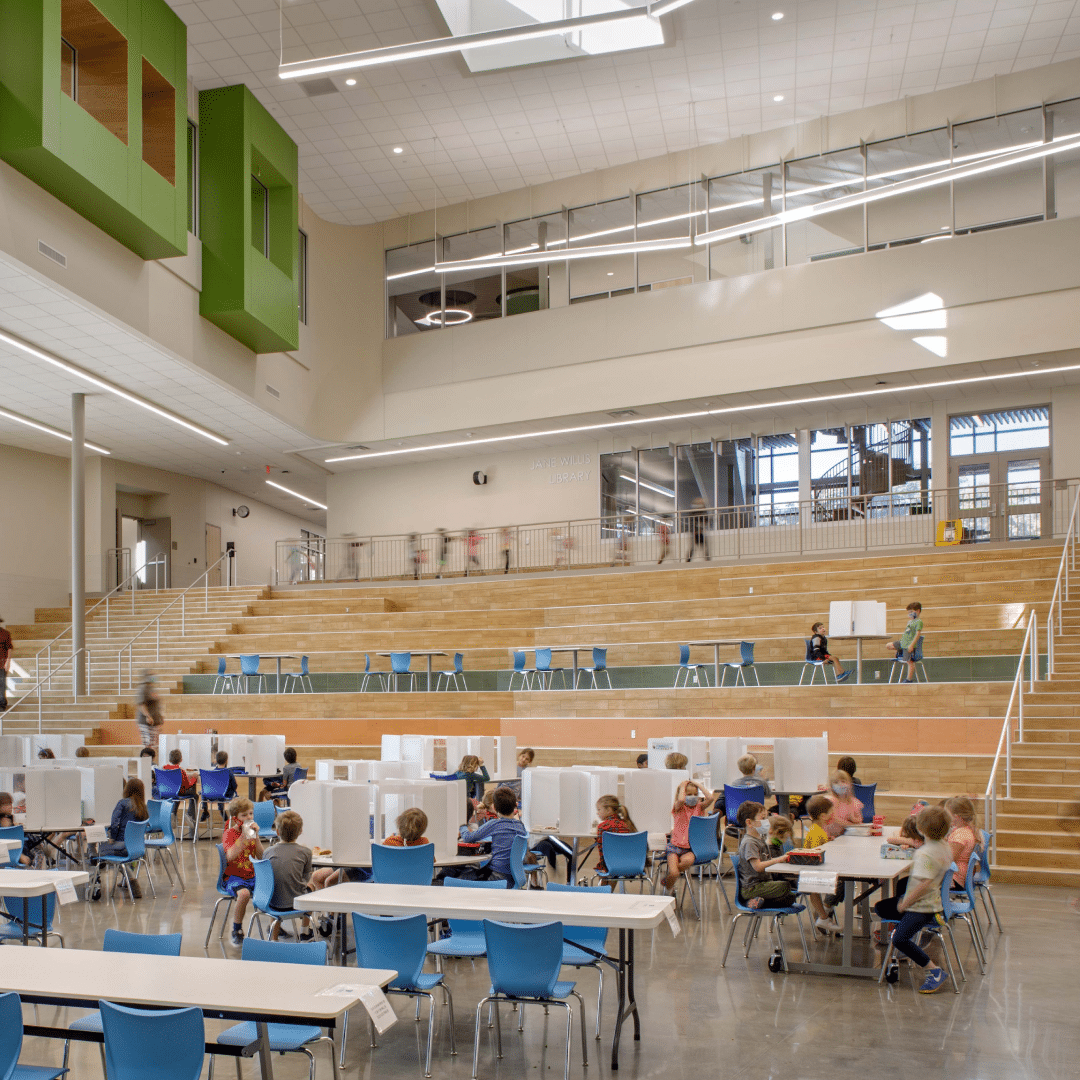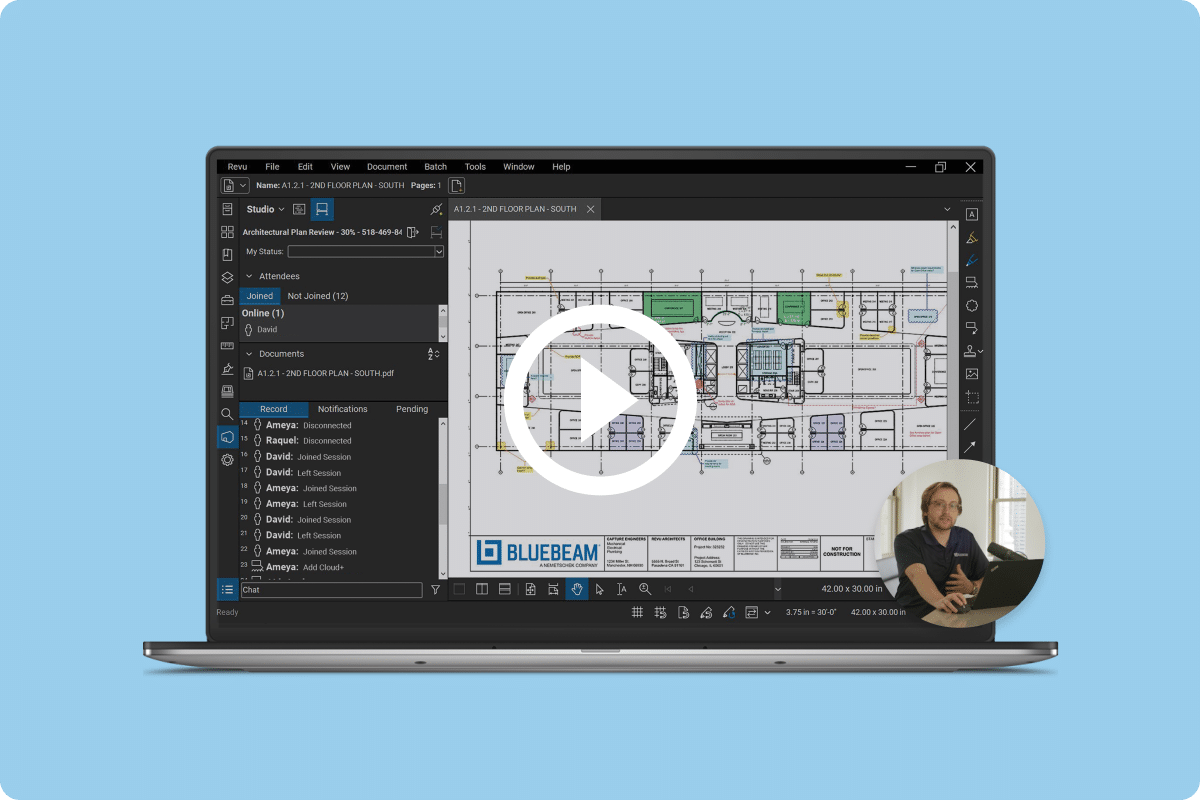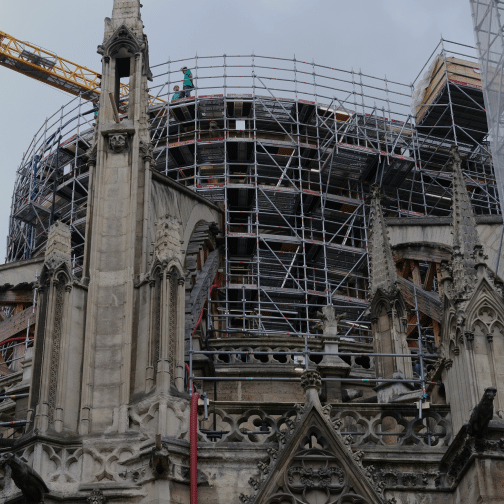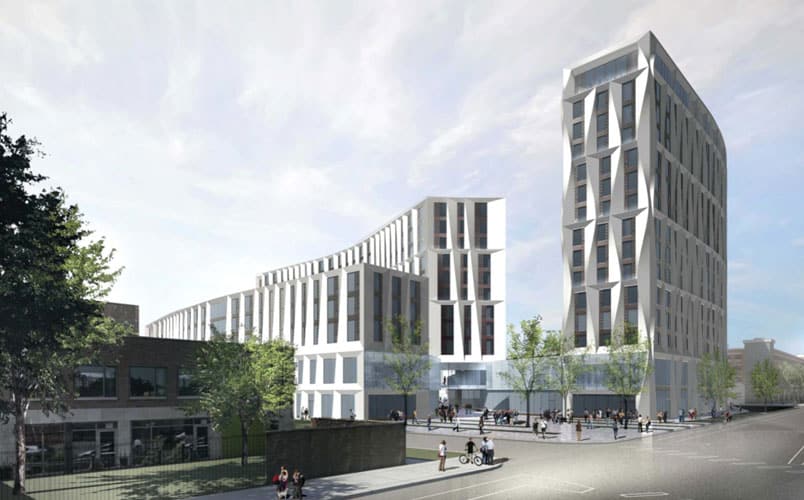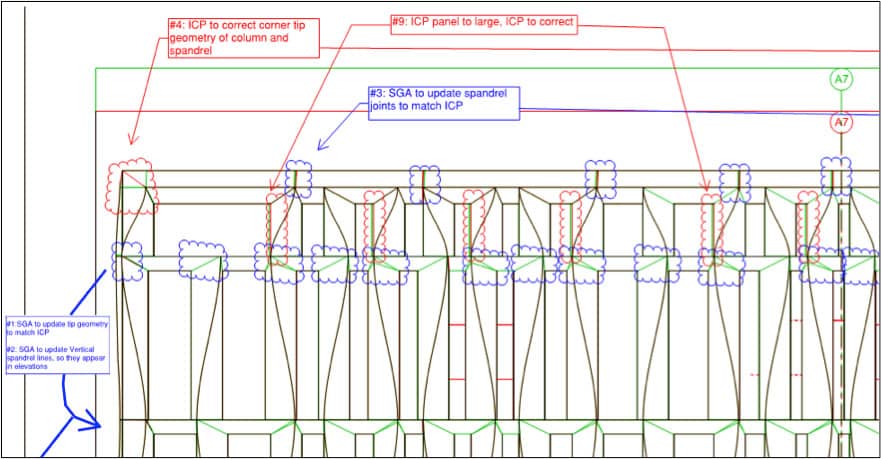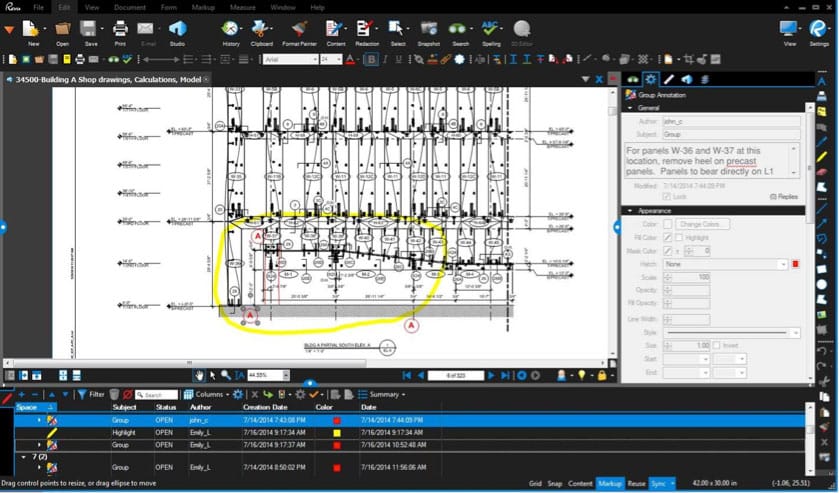Mortenson Construction Looks to Revu to Help Deliver World-Class Design to the University of Chicago
Mortenson Construction has a history of going after ambitious projects, like the Walt Disney Concert Hall—once labeled “unbuildable,” it is now one of the most iconic structures in Los Angeles. The firm’s desire to be the most progressive in the industry has driven them to seek creative solutions that continually push the envelope of what’s possible. Their latest project for the University of Chicago is no exception.
As the first major design-build project at the University, the new residence hall will consist of a four-building complex ranging in height from one to fourteen stories. Targeting LEED Gold, the nearly 400,000-square-foot facility will be a cast-in-place concrete structure enclosed with precast panels meant to emulate the limestone exterior found throughout the University.
Mortenson teamed with renowned design firm Studio Gang Architects, and they were awarded the project after completing a rigorous design competition. The winning combination of Studio Gang’s world-class design, coupled with Mortenson’s innovative construction solutions, couldn’t be beat.
To honor the collaborative spirit of the design-build delivery method, the Mortenson team wanted to be involved as early on in the process as possible, so they co-located with trade partners and members of Studio Gang on the south side of Chicago near the campus, providing a convenient location for everyone to work together. To take it even further, Mortenson decided to utilize Bluebeam Revu and its integrated cloud collaboration solution, Bluebeam Studio, to share, edit and comment on project documents during design review and construction.
Mortenson’s Jennifer Suerth, an Integrated Construction Manager, and Danny O’Brien, a Project Engineer, are leading the virtual design and construction (VDC) efforts on the project, and both had prior experience using Revu as a company-wide standard. “Bluebeam is instrumental to our workflow, so it’s just how we function on all of our projects,” said Suerth.
“The construction process is linear. Design is circular. On this project, we are combining the two.”
Jennifer Suerth, Integrated Construction Manager, Mortenson Construction
Comparing Models: Completing a Two-Week Job in Just 20 Minutes
Completing a Two-Week Job in Just Twenty Minutes
One of the biggest challenges the team faced was preparing the complex precast concrete panels for fabrication. These three-story panels curve in multiple directions, with no point ever repeating, so making sure they were all properly aligned was crucial. Although the architect had created the design models in Revit, the precast team had created their own version with the more precise level of detail necessary for fabrication. While this would ensure a perfect fit, it also meant the models needed to be compared on every panel for all three towers to make sure nothing was changed or left out and the design intent was met.
The panels are a key feature of the design, and the panel geometry is complex. This meant the review needed to be even more in-depth and time-consuming than usual. Therefore, each building design would need two full weeks to be sufficiently reviewed by all parties.
Mortenson and the design team started reviewing the panels concurrently. Suerth decided to try running the comparisons using Revu’s Overlay Pages feature, which assigns a different color to each document so she could easily see the differences. She created a master Revit model that linked in both the fabrication and design Revit models with matching sheets and views created for both models. She was surprised to find that after the initial shell model and sheets were created, not only did Revu highlight more differences than other methods of comparing the panel geometries, but the process took just 20 minutes to complete.
Hyperlinking RFIs Up to 97% Faster Than Before
As part of Mortenson’s paperless process, they maintain a master set of current construction documents on their network and post them daily to what they call “plan room computers” in all of their project site offices. These plan room computers contain easy-to-navigate dashboards and large screens accessible to anyone on the project site. The documents posted to these computers also contain hyperlinks to all of the drawings, details and RFIs associated with each sheet. To hyperlink all of the RFIs and detailed drawings and sections within the master set, the project team used Revu’s Batch Link feature, which automatically links up entire document sets. This saved them an incredible amount of time—manually hyperlinking a typical 60-page drawing set would have taken the team approximately six to eight hours, but they were able to cut that time down to just 10 minutes. In addition to hyperlinking, they also included images with their comments for visual clarification.
“Using Revu’s Batch Link feature to hyperlink not only saves time, but is also a key part of our quality control program, allowing the team to keep a real-time electronic master set of documents. With such a fast-paced design, this is critical in ensuring all changes are picked up.”
Danny O’Brien, Project Engineer, Mortenson Construction
Eliminating the Endless “Revise and Resubmit” Submittals Cycle
In the past, Mortenson would send out submittals as an attachment in their project management software, which meant a lot of time was wasted on back-and-forth communication. While thinking about how to improve this process, Suerth and O’Brien found themselves wondering, “What if we never received a revise and resubmit request?” They decided to move their submittals into a Bluebeam Studio Session so everyone on the team could easily view them in real time, as well as ask questions and respond. To standardize their comments among the team, they saved custom tools and stamps in Revu’s Tool Chest, which stores markups for easy reuse and makes it easy to share them with colleagues. The design team also attached images to comments for further clarification. And, because all comments are tracked in the Markups list, it has been clear who has said what and when. Using this new workflow, they could mark a question, have a discussion, close an issue, and track it for future reference in just a short amount of time.
“The Studio Sessions also gave all external partners the means to markup documents electronically, and the custom Tool Chest ensured that markups were consistent throughout each submittal. With the submittals marked up in Studio, we are then able to navigate, quantify, organize and manage markups with one click of the mouse!”
Danny O’Brien, Project Engineer, Mortenson Construction
Sharing 3D Information With Project Partners
To share Navisworks information with partners who didn’t have access to the model or needed information quicker and in a less formal environment, Mortenson created 3D PDFs in Revu. This allowed team members to gain visual understanding of the design, regardless of their familiarity with or access to 3D modeling software. 3D PDFs facilitated faster communication by allowing team members to share information visually and receive expedited responses and comments with the simple markup tools in Revu.
“Everyone was using the same tools, looking at the same document in Bluebeam Studio, with no time wasted on sending attachments back and forth.”
Jennifer Suerth, Integrated Construction Manager, Mortenson Construction
